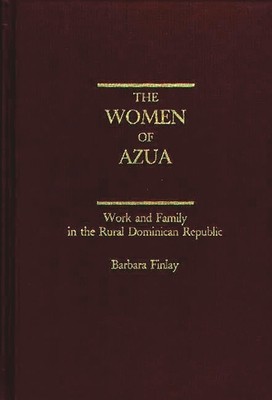
- We will send in 10–14 business days.
- Author: Barbara Finlay
- Publisher: Praeger
- ISBN-10: 0275932206
- ISBN-13: 9780275932206
- Format: 14.7 x 21.6 x 2.1 cm, hardcover
- Language: English
- SAVE -10% with code: EXTRA
Reviews
Description
The Women of Azua studies the effects of male-oriented economic development projects and export processing industries on the traditional family structure in Third World countries. Emphasizing the sexual division of labor, this study is based on field observations and a survey of women in rural communities in the Dominican Republic. The communities studied are all located near large agribusiness food-production facilities. The author studies the impact of these companies--through their employment of women--on families, attitudes, level of living, and the aspirations of the women themselves. While measuring the impact of industrial employment on women and their families, this volume also presents a culture, and its women, not yet studied by North American sociologists.
This study covers a wide range of characteristics including levels of living, employment, marital status and attitudes, household division of labor, nutrition and health, childbearing, aspirations for children, etc. For each topic the author compares two representative samples of women: a community sample and a worker sample. The typical woman in the rural Dominican Republic is seen through the community sample. The worker sample displays the differences in women's lives due to their work for an export food-processing company.
EXTRA 10 % discount with code: EXTRA
The promotion ends in 19d.02:10:15
The discount code is valid when purchasing from 10 €. Discounts do not stack.
- Author: Barbara Finlay
- Publisher: Praeger
- ISBN-10: 0275932206
- ISBN-13: 9780275932206
- Format: 14.7 x 21.6 x 2.1 cm, hardcover
- Language: English English
The Women of Azua studies the effects of male-oriented economic development projects and export processing industries on the traditional family structure in Third World countries. Emphasizing the sexual division of labor, this study is based on field observations and a survey of women in rural communities in the Dominican Republic. The communities studied are all located near large agribusiness food-production facilities. The author studies the impact of these companies--through their employment of women--on families, attitudes, level of living, and the aspirations of the women themselves. While measuring the impact of industrial employment on women and their families, this volume also presents a culture, and its women, not yet studied by North American sociologists.
This study covers a wide range of characteristics including levels of living, employment, marital status and attitudes, household division of labor, nutrition and health, childbearing, aspirations for children, etc. For each topic the author compares two representative samples of women: a community sample and a worker sample. The typical woman in the rural Dominican Republic is seen through the community sample. The worker sample displays the differences in women's lives due to their work for an export food-processing company.


Reviews